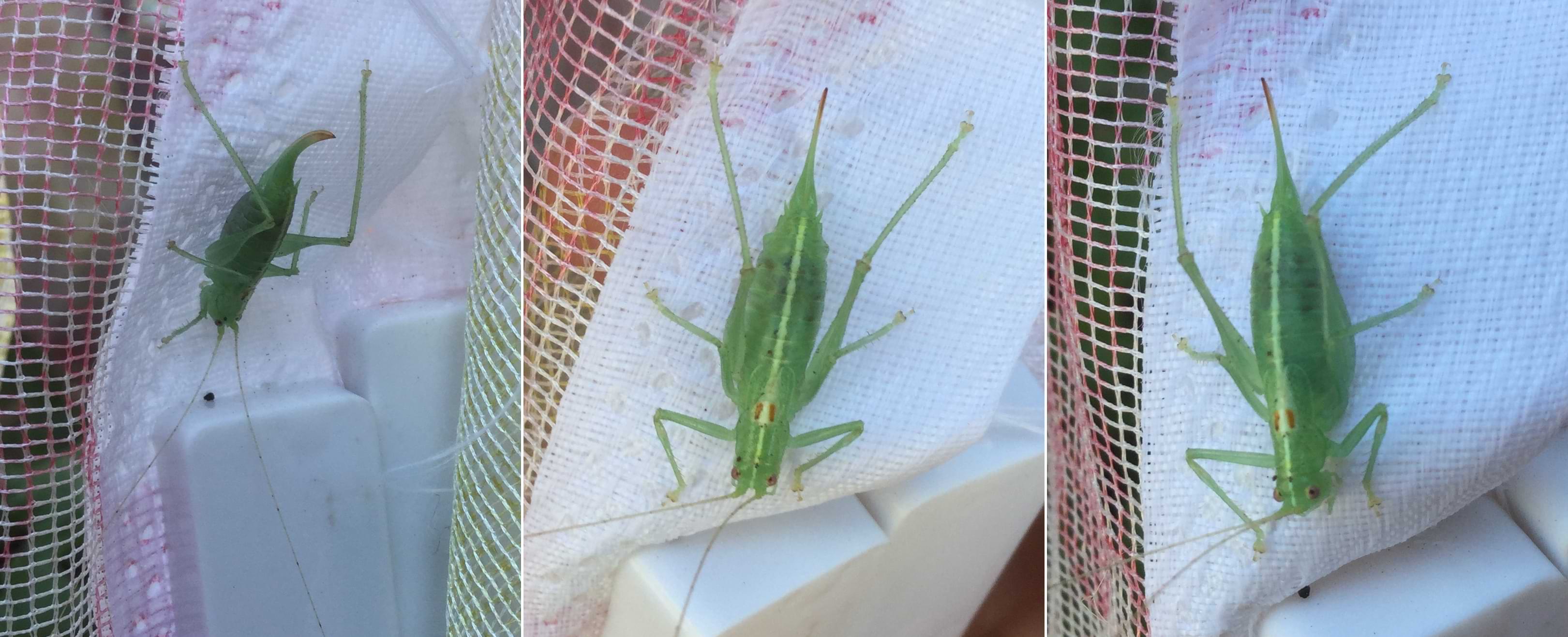Southern Oak Bush Cricket!
Photos taken:
2022/08/07
This is a female katydid or a bush cricket as they're known in the UK! You can tell she's female based on the curved ovipositor at the end of her abdomen.
I really love how leaf-shaped she is, particularly how the yellow line running down the middle of her body looks like a stem! She isn't very well disguised against white netting but I definitely would have a hard time spotting her if she were on a plant.

These photos have been cropped to save on file size, so it's not very visible here, but her antennae are at least twice as long as her body. I tried to keep my hands away from her so not to bother her too much but she still managed to tap my palms a few times with her antennae!!
It took a bit of time to identify her species but I'm fairly confident this is a southern oak bush cricket. I thought she was a nymph at first as her wings are tiny and only barely visible in these photos, but this species just has very small wings even as an adult. Southern oak bush crickets have apparently been observed preying on the larvae of horse-chestnut leaf miner moths and there are horse-chestnut trees near me so this makes a lot of sense! If any southern oak bush crickets are reading this, I'd like to say thank you very much for protecting my local conker tree population! My childhood would've been slightly less interesting without them.
Finally, there are a bunch of dark patches near the end of her abdomen and pictures of this species I found online don't have those patches. Was she pregnant maybe??? A quick look at bush cricket anatomy shows this is roughly where her ovaries are, but I couldn't find any detailed information about how they reproduce so I'm not sure.
Either way, I hope she went on to eat tons of caterpillars and lay lots of eggs. It'd be nice to see some more katydids in the future, finding this one has made me really enamoured with them!